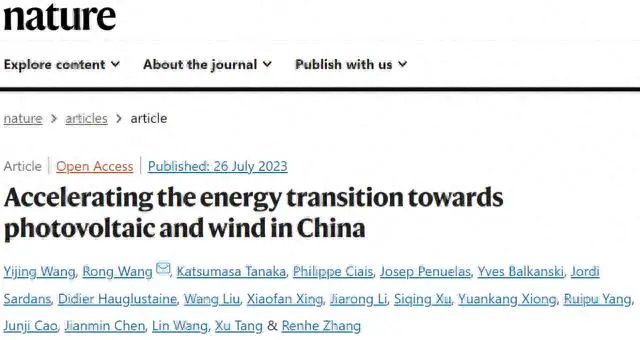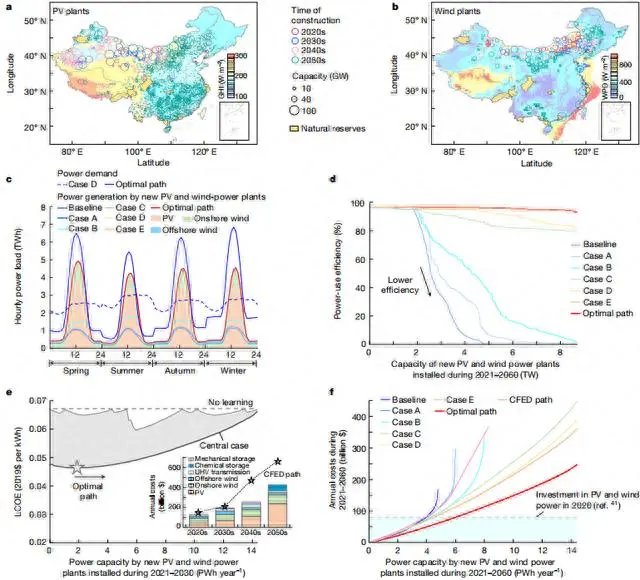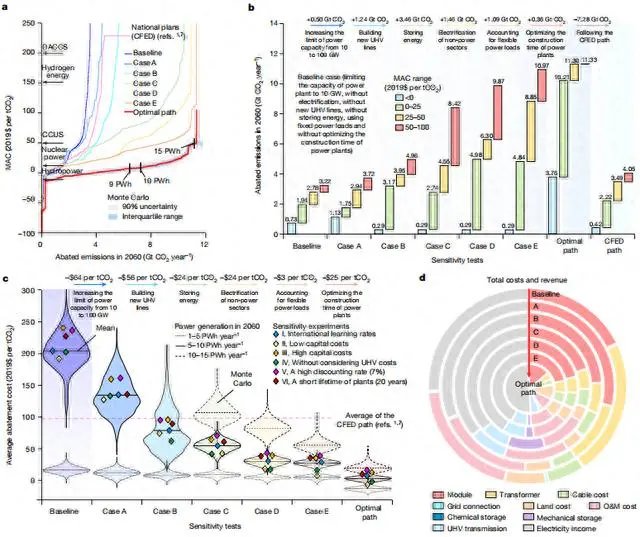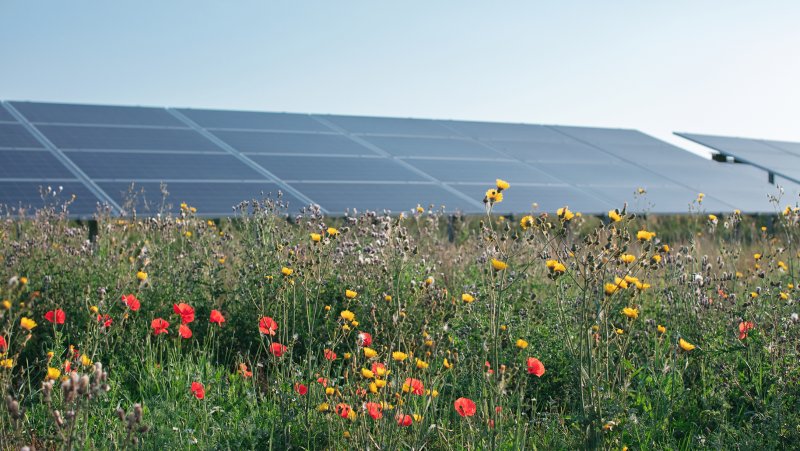
Solar and wind energy are complex issues involving various disciplines such as atmospheric science, geography, and economics. Solar energy depends on factors like solar radiation, geographical location, and the impact of clouds in the atmosphere. Similarly, wind energy efficiency is affected when wind direction is unstable, impacting its effectiveness.
Therefore, scientists are focusing on how to obtain high-resolution data from both Earth and socio-economic systems, and integrate this with meteorological data related to solar and wind energy. To expedite the progress of photovoltaic and wind energy development in China, a team led by Fudan University's young researcher, Wang Rong, has proposed an innovative solution from the perspective of energy coordination, employing an interdisciplinary approach combining natural sciences and socio-economics.
The team coupled ultra-high-resolution Earth system data with complex electricity system data, revealing that the potential of solar and wind energy resources in China had been underestimated in the past. China has the potential to increase its photovoltaic and wind power generation capacity, projecting that by 2060, electricity generation could rise from 9 trillion kilowatt-hours to 15 trillion kilowatt-hours, satisfying approximately 60% of the nation's total electricity demand by 2060.

"This study provides a comprehensive model, outlining the optimal path for China to scale up solar and wind energy production from the present to 2060. The model stands out for its attention to detail and methodology. An important finding is that the cost of solar and wind energy depends on their electricity output. Optimizing the system can effectively reduce costs and increase electricity output," commented a reviewer from Nature.
In essence, as demand for solar and wind energy increases, inexpensive resources become limited, leading to the use of more expensive alternatives. This challenges the common perception that solar and wind energy prices will continually decrease, offering insights for optimizing the power system.
Recently, the related paper titled "Accelerating the energy transition towards photovoltaic and wind in China" was published in Nature, with Wang Yijing, an undergraduate-to-doctoral student, as the first author and Wang Rong as the corresponding author.
This is the second time that Wang Rong's team has published research related to energy issues in Nature. In September 2022, they discussed climate change solutions from the perspective of biomass energy, raising questions about relying on large-scale biomass energy in the future. This latest research emphasizes using solar and wind energy more extensively to combat global climate change and explores the integration of different new energy technologies.

The team faced two main challenges. First, obtaining a set of data for calculating the potential of solar and wind energy generation was essential. Typically, similar foreign studies had a spatial resolution of only about 400 kilometers. However, the team used the Earth System Numerical Simulator "Huan," developed by the Institute of Atmospheric Physics of the Chinese Academy of Sciences, achieving a global high-precision environmental simulation resolution of 1 kilometer and solving the problem of temporal discontinuity in previous research.
The second challenge they tackled was simulating future intelligent power systems, requiring a deep understanding of changing electricity demand. Wang Rong stated, "The most significant discovery in the research was related to our judgment on the prices of solar and wind energy. Contrary to previous beliefs that their prices would continuously decline, we proposed the opposite view. As demand increases, and when inexpensive solar and wind energy resources are exhausted, we are left with relatively expensive resources."
The team mentioned in the paper that cheap solar and wind energy resources in China are mainly concentrated in regions such as Hebei and Inner Mongolia. In the future, when these resources are depleted, they will shift to the western regions like Xinjiang, Qinghai, and Gansu. However, this would require transmitting electricity to the northern and eastern regions through high-voltage power lines, increasing the demand for energy storage and causing a significant rise in the cost of wind and solar energy.
To address this issue, the research team proposed an alternative solution: Could China adjust its industrial layout in the future? For instance, relocating energy-intensive industries like steel production from the eastern regions to the western regions. This would lower energy costs in regions with higher solar and wind energy development potential while stimulating economic growth in the western regions.
The team plans to expand the scope of this research from China to global regions. They have already compared China's carbon neutrality path with countries like Spain, Germany, and France. They found that each country has its unique characteristics. For example, many European countries have lower electricity demands and can rely on nuclear power alone to meet local energy needs.

Image: Optimizing the Spatiotemporal Layout of Solar Photovoltaic and Wind Power Development from 2021 to 2060 (Source: Nature)
In contrast, China has a significantly higher energy demand, surpassing that of the entire European continent. Hence, relying solely on a single energy source is insufficient. Moreover, China possesses abundant solar and wind energy resources, particularly in North and Northeast China, where high-quality wind resources are abundant.
Wang Rong emphasized that China is one of the world's leading countries in solar and wind energy development technology. He stated, "We conducted sensitivity analyses in our research, and if China were to decouple from foreign sources, the impact on related costs would be only around 1%-2%, while the related costs for the United States would increase by over 50%. I believe that countries should continue to increase their investments in solar and wind energy. This not only reduces the economic cost of achieving carbon neutrality for China but also positions it advantageously in the future global clean energy market."
In 2020, China officially announced its goal of achieving carbon neutrality and peak carbon emissions. As one of the researchers in this field, Wang Rong had already begun accumulating technical knowledge and adjusting research directions seven years before the official declaration of these objectives.
His research direction shifted from atmospheric chemistry to energy system research. In 2013, he obtained a Ph.D. in Environmental Geography from Peking University. At that time, the primary environmental concern in China was air pollution. Shortly after, the country implemented a series of carbon neutrality policies. "At that time, I made a judgment that air pollution would not persist for long, and I hoped to find a new research direction in advance," Wang Rong said.
Subsequently, he went to France to conduct postdoctoral research at the Climate Change Research Center, focusing on the impact of vegetation changes in the Earth system on global climate change. Wang Rong believed in solving practical problems with the research he conducted. In 2016, he joined the Carnegie Institution for Science at Stanford University in the United States to continue his postdoctoral research.
"The research group I joined had a strong emphasis on exploration. I suggested to my cooperating mentor that I wanted to study solutions to climate change from an economic perspective. This was almost a completely new topic for me. Fortunately, after continuous effort and tackling challenges, I gradually accumulated relevant foundations in this field," he said.
In 2018, Wang Rong returned to China and joined Fudan University as a faculty member, where he established an independent research group. They researched solutions to global climate change and explored the issue of China's optimal economic path to carbon neutrality (minimizing costs).
One of the recent topics Wang Rong's team is researching is whether there are critical points in the climate system. Currently, they are attempting to study the rate of global temperature increase by implementing specific measures.
Before 2060, it might still be possible to use a certain amount of fossil fuels. However, the question remains: What energy sources should China rely on after 2060? This question is complex and riddled with uncertainties. Therefore, while researching the physical mechanisms of global temperature rise, the team is also committed to studying the low-carbon transformation of global energy systems.

Image | By 2060, the cost of reducing carbon dioxide emissions through the deployment of solar and wind energy in China (Source: Nature)
"We have screened every type of energy source, including biomass energy, hydrogen energy, nuclear energy, and hydropower, examining their impact on future global climate, environment, and ecosystems. Through interdisciplinary research that combines natural and social sciences, we aim to provide comprehensive, scientific, and reliable assessments of future energy systems for China and the world," concluded Wang Rong.

OWELL Industries is a leader in the pursuit of Carbon Neutrality. We specialize in designing high-cost-effectiveness wind and solar power systems. Our product range includes a variety of cutting-edge wind turbines and solar panels, tailored to meet your unique needs. With a commitment to sustainability and a passion for innovation, we provide customized solutions that drive a greener future. Join us in the transition to cleaner energy and a more sustainable world with OWELL Industries.
Flagship Products:
5kW vertical axis wind turbine
10kW horizontal axis wind turbine
High Efficient Monocrystalline 50-500W Solar Panels
high efficient Polysilicon solar panels 50-500W solar panels
